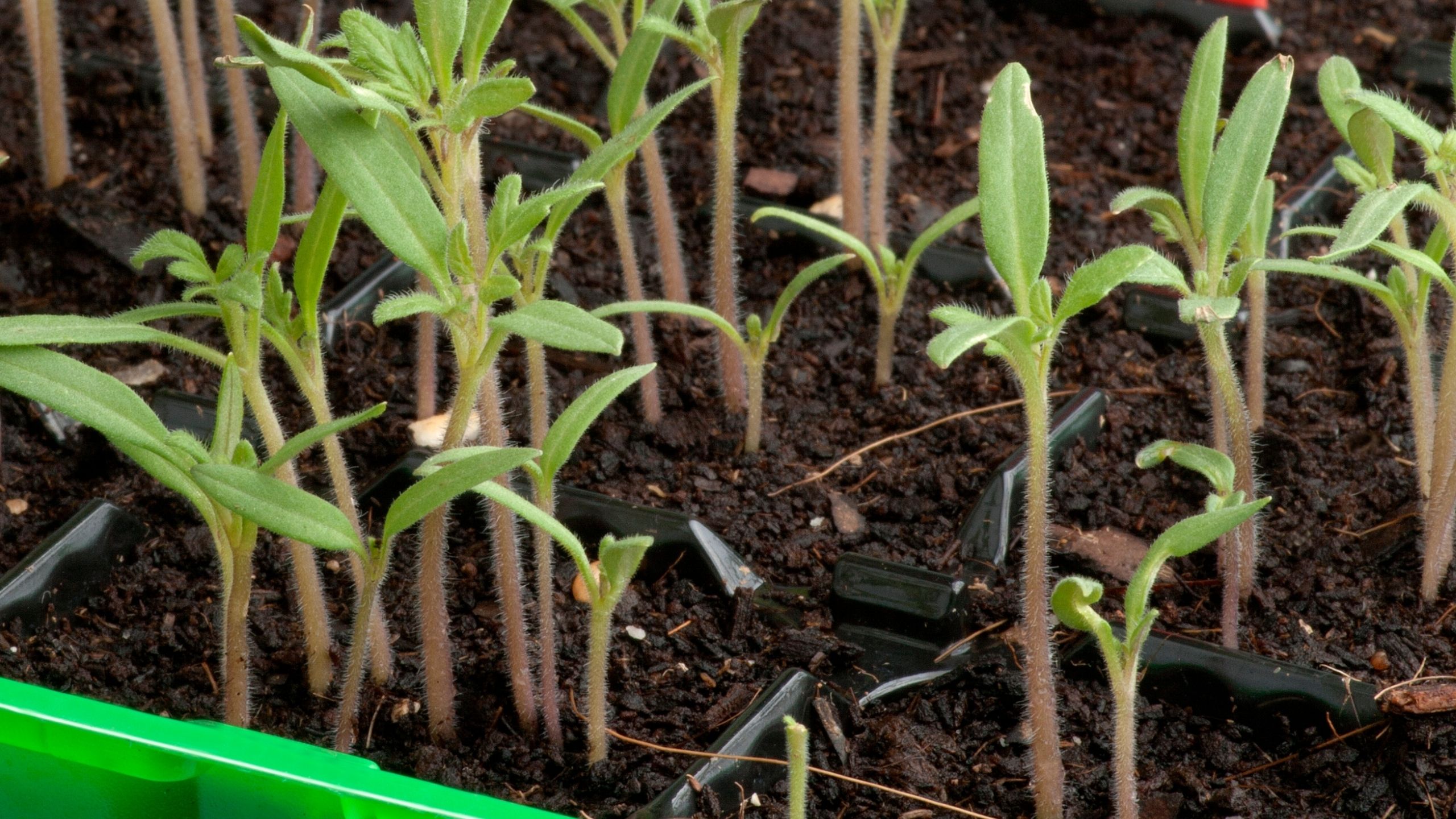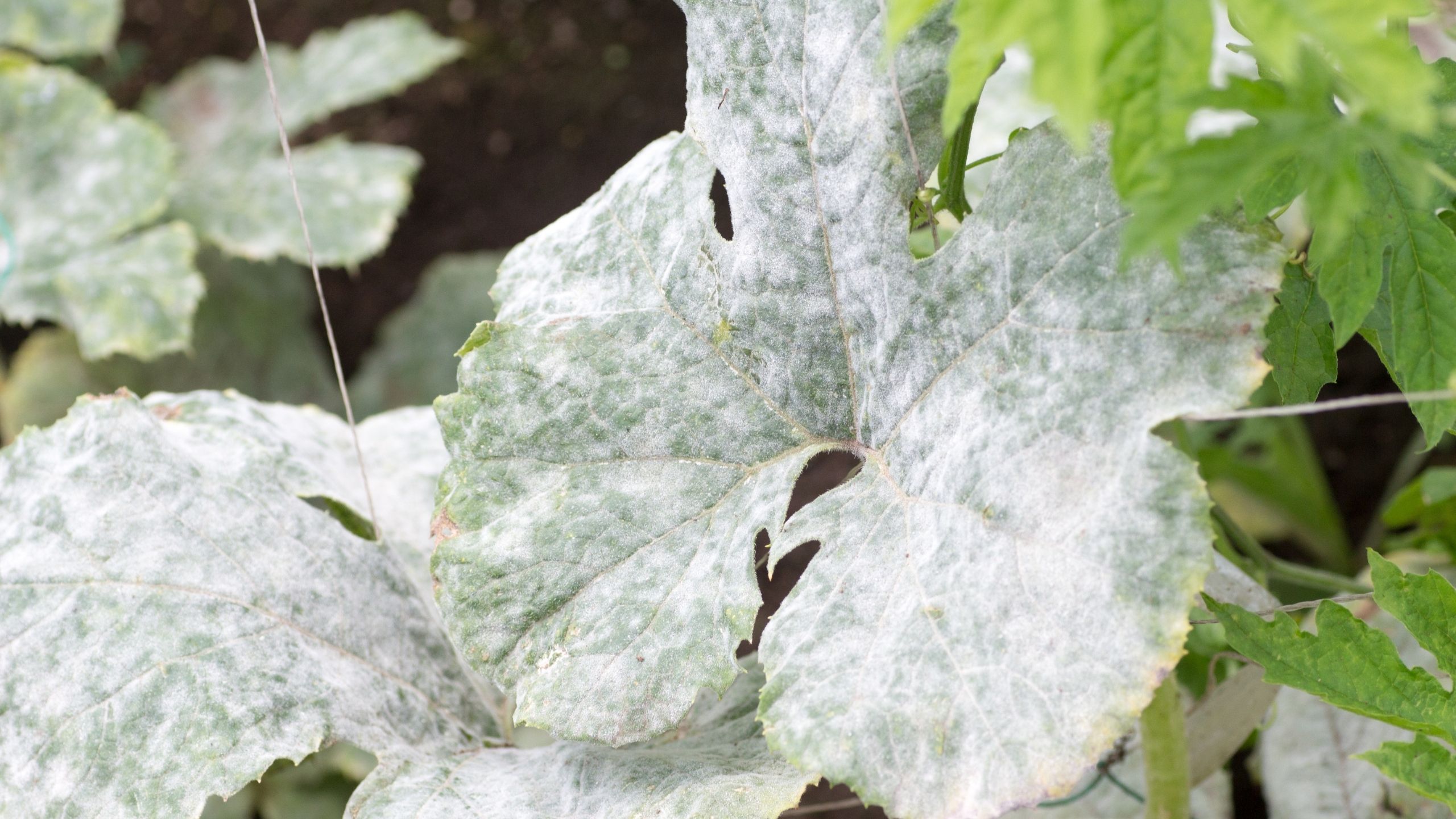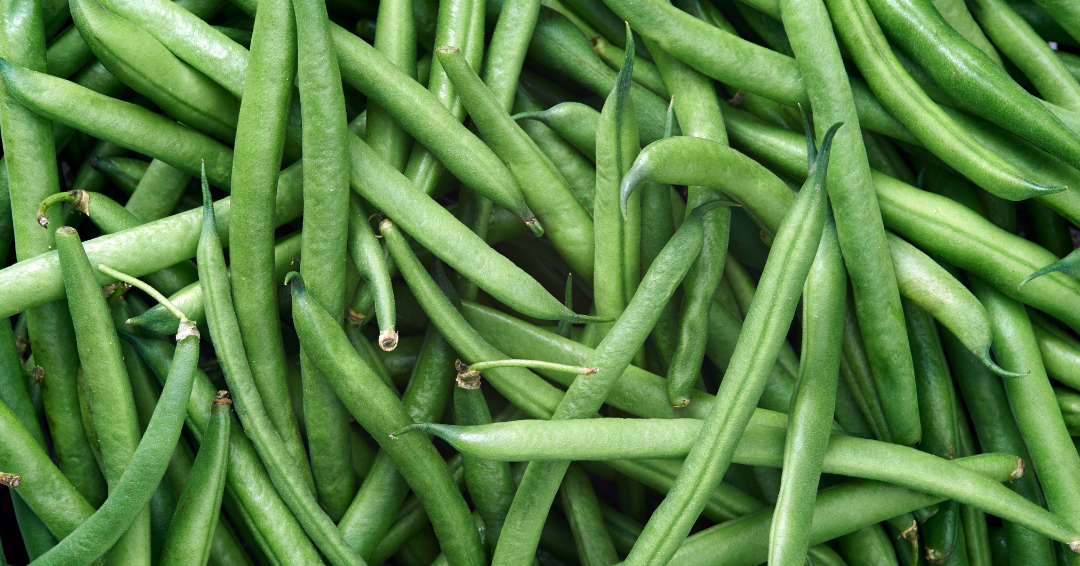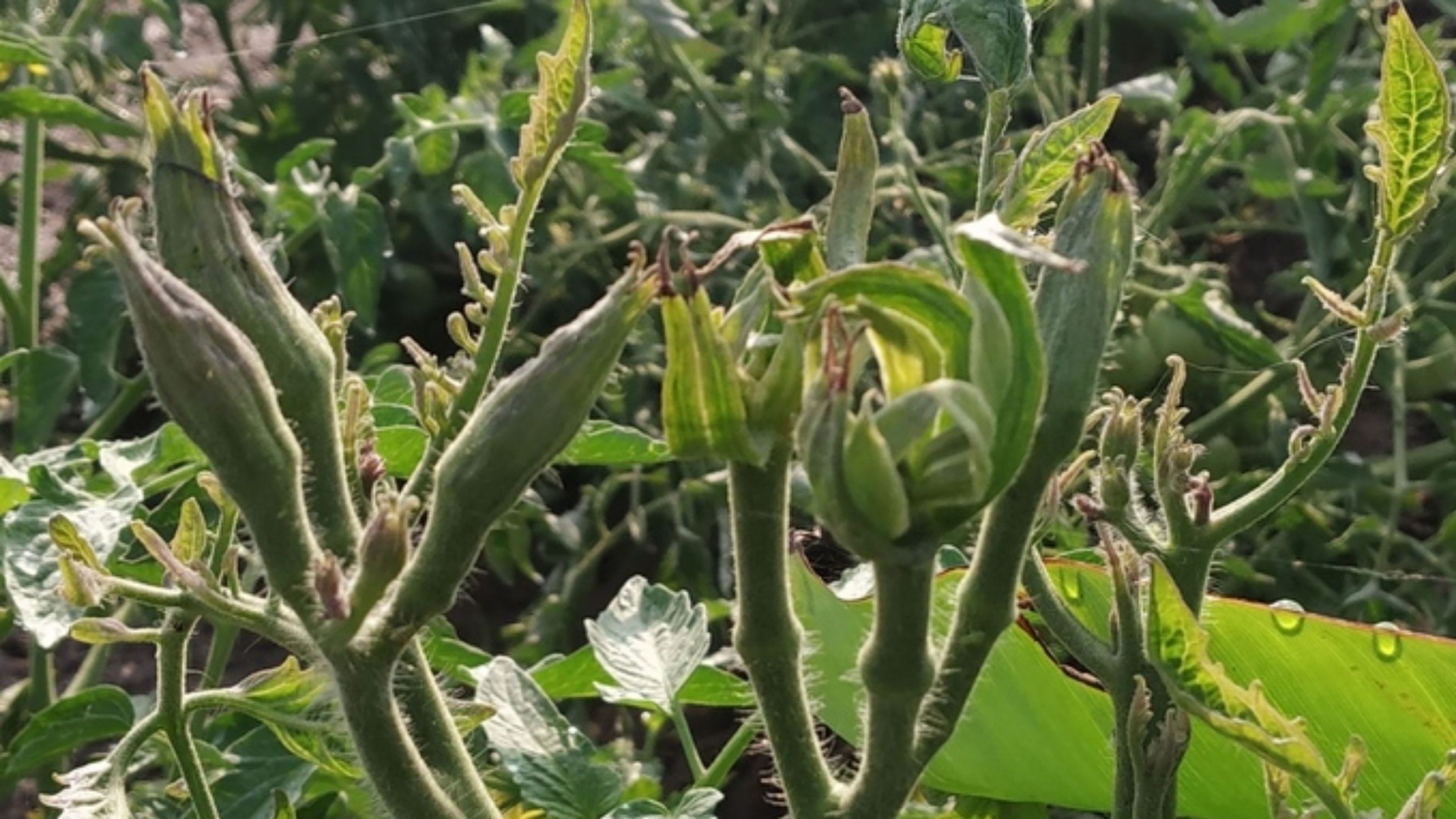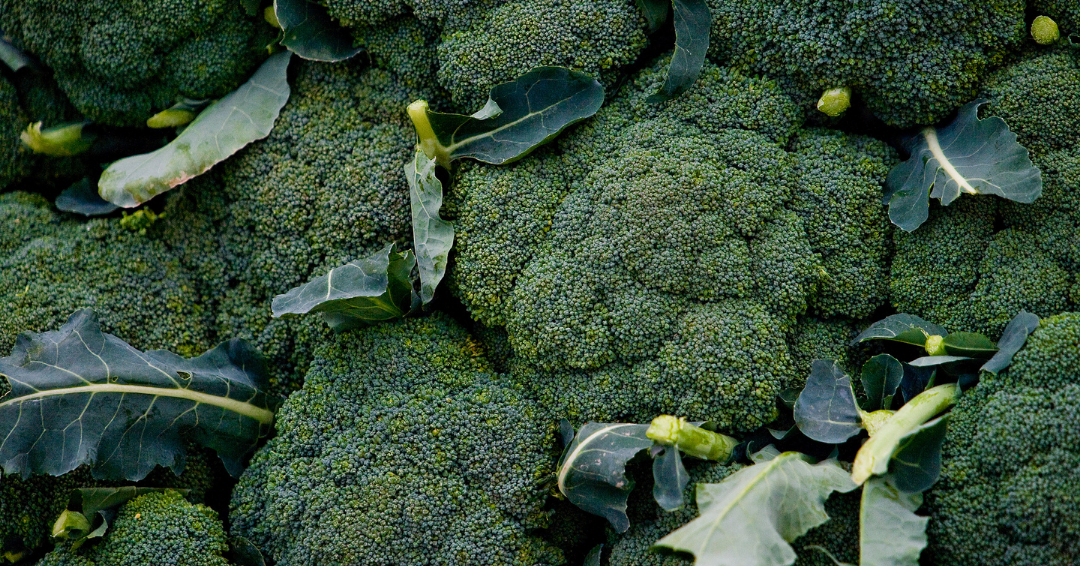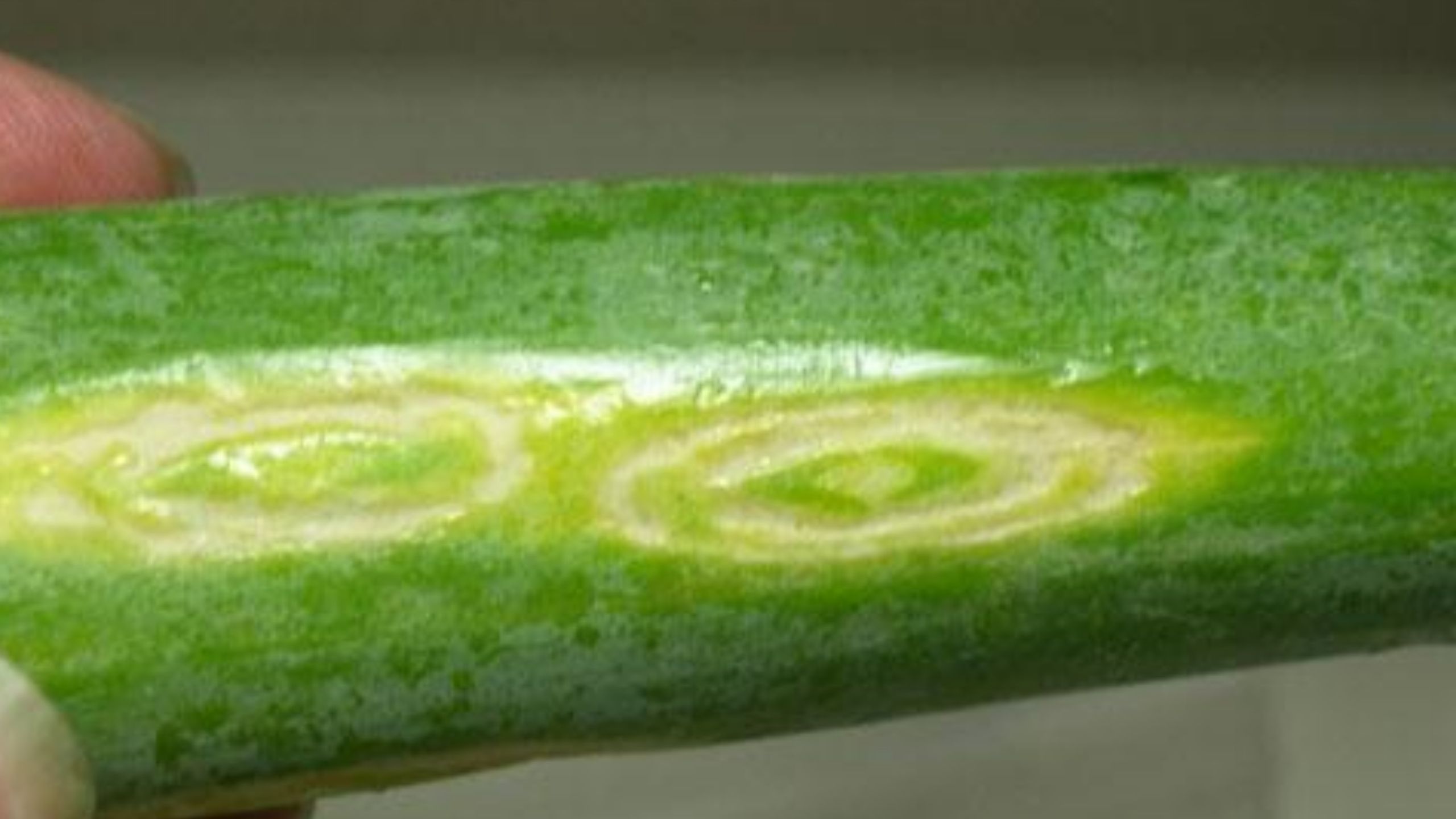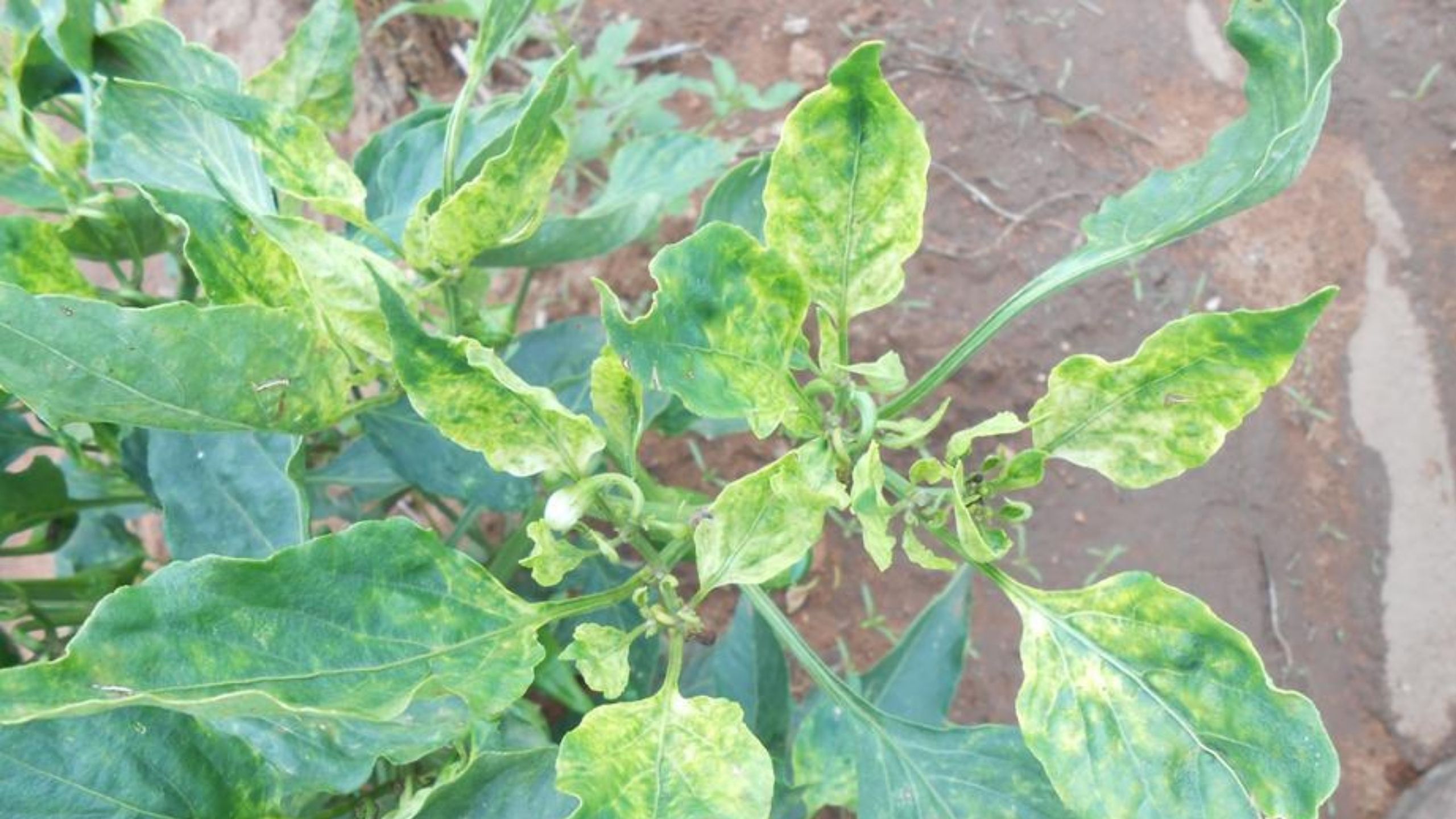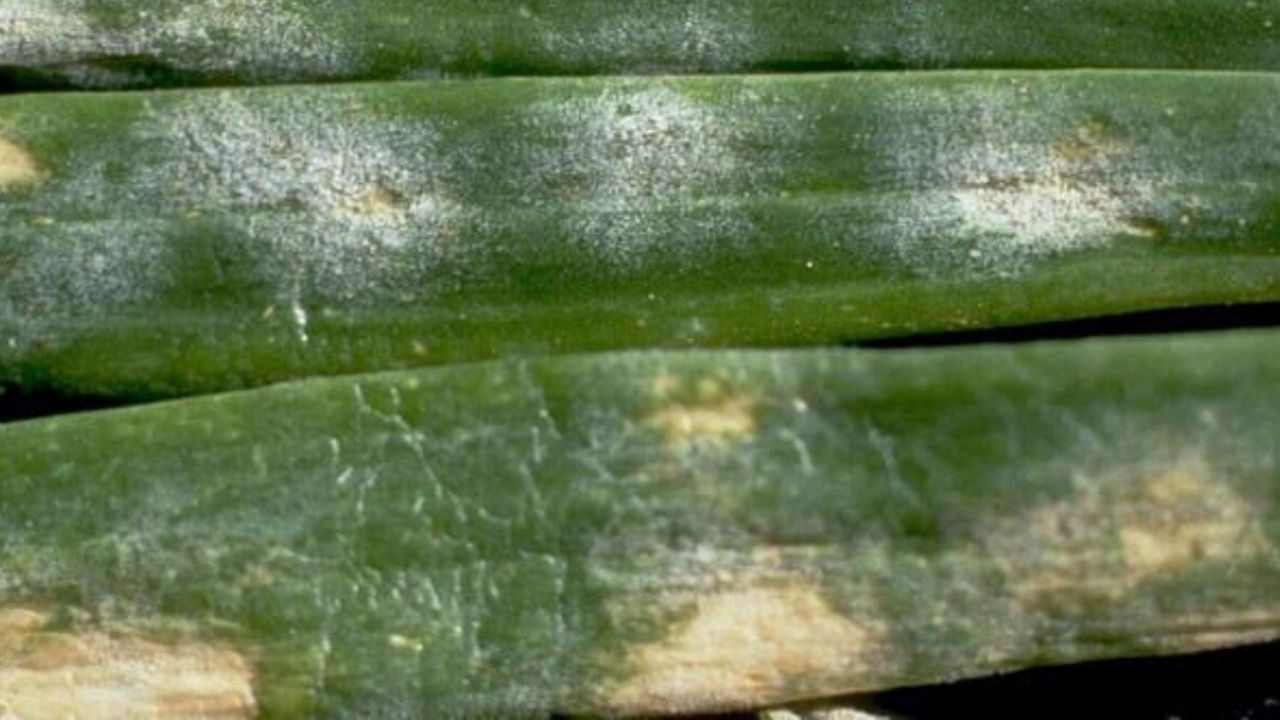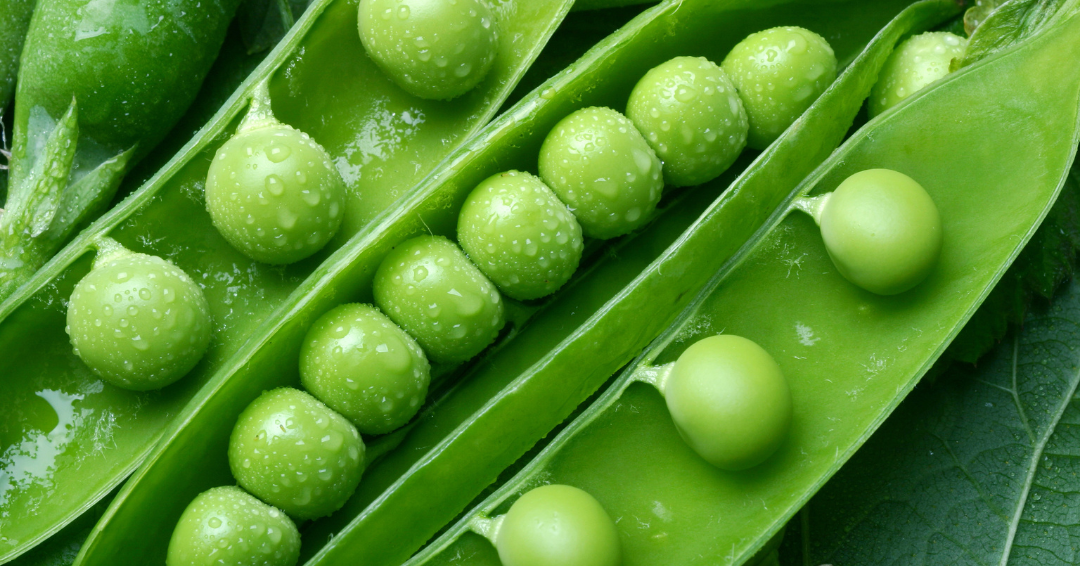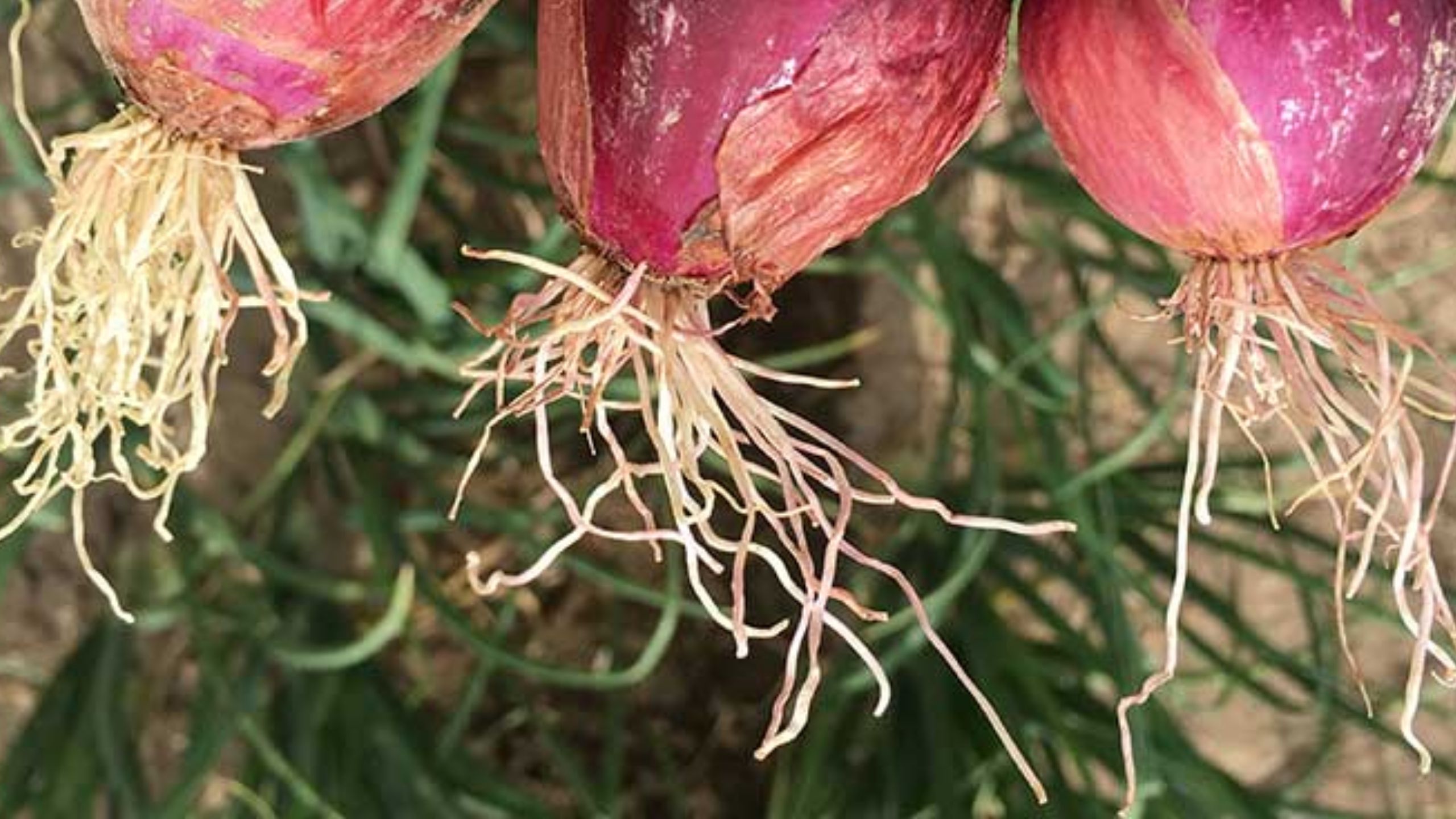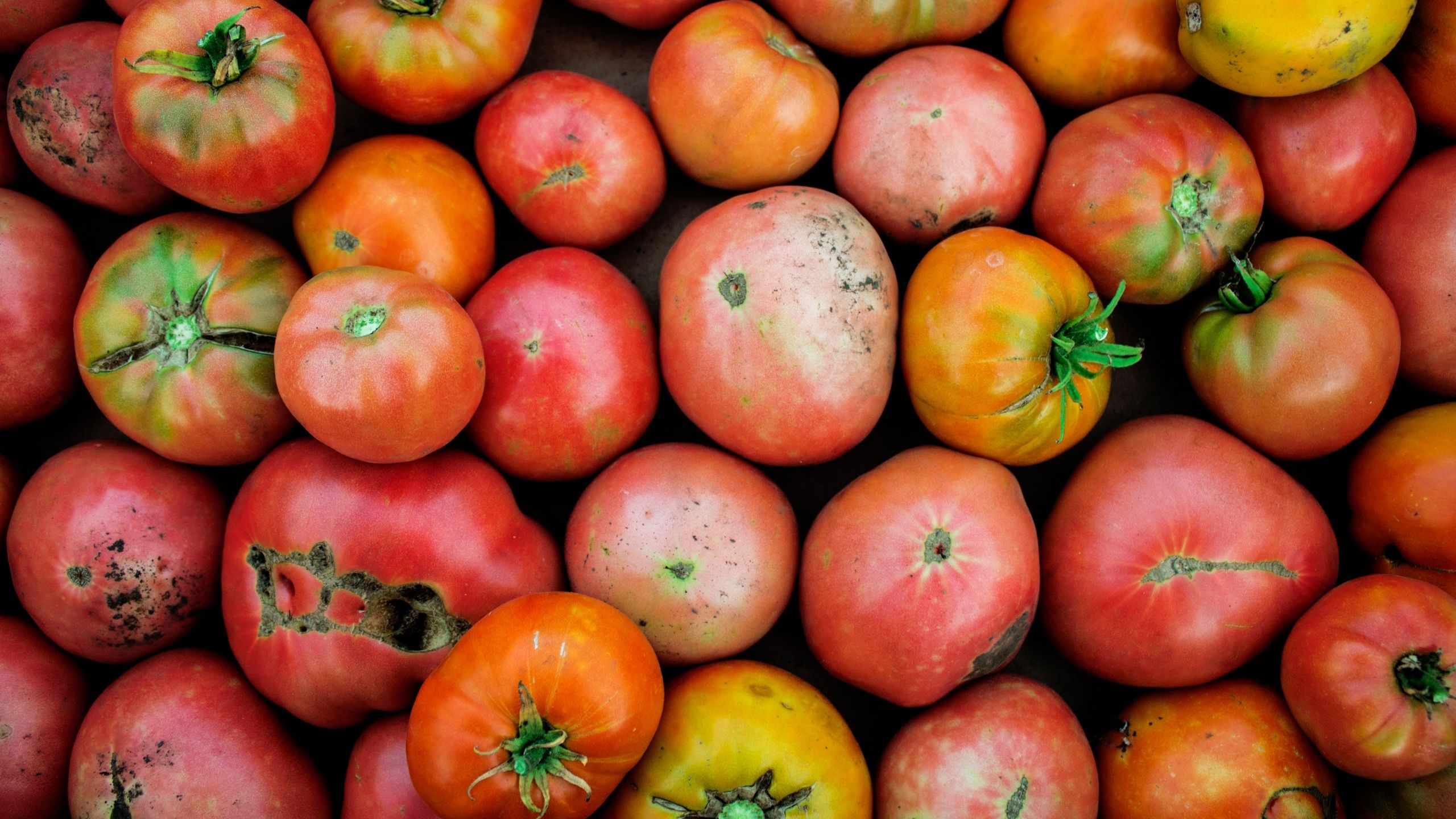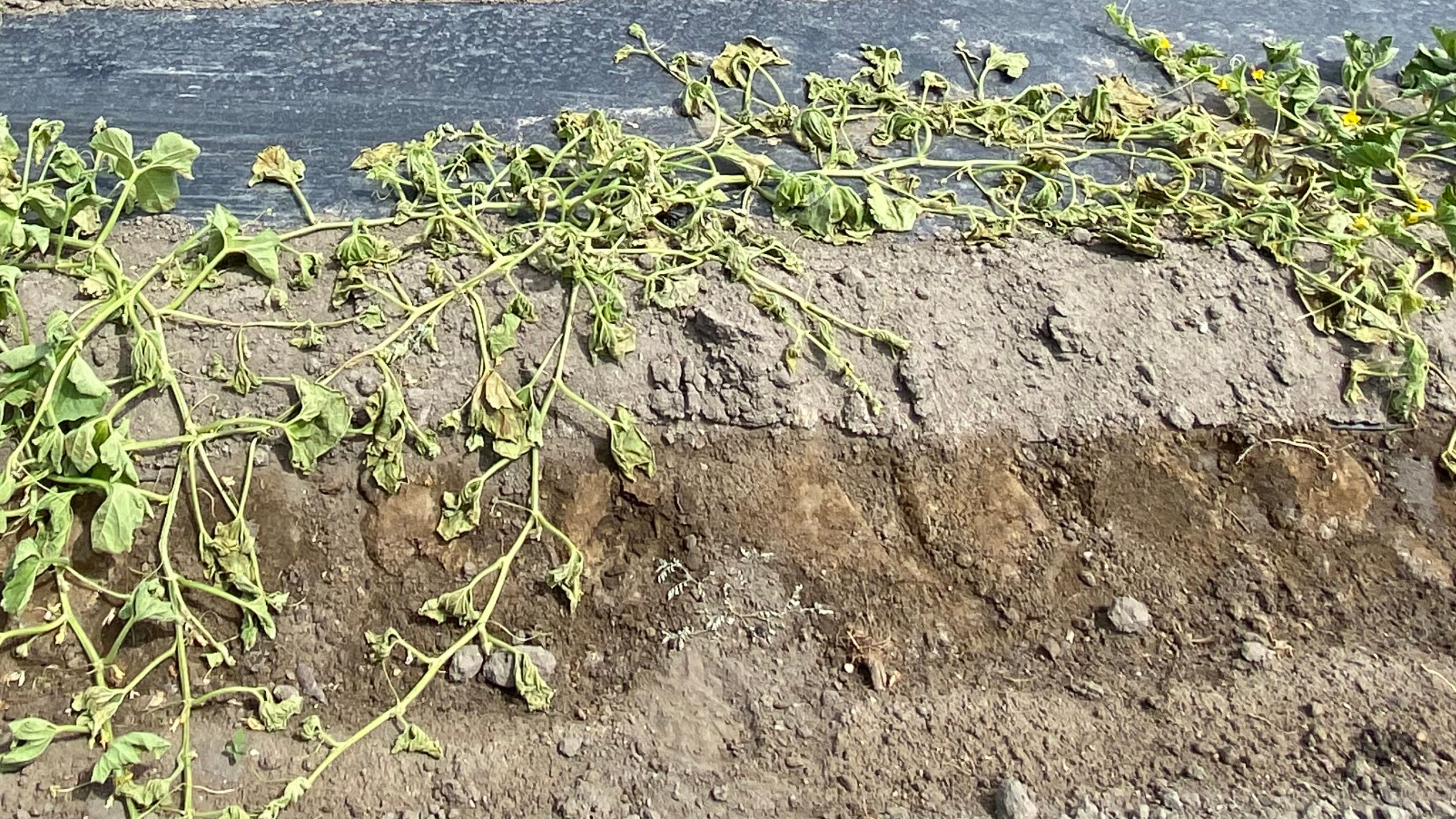Iris Yellow Spot Virus in Onions
April 2009
Kent Evans, Extension Plant Pathologist • Erin Frank, Extension Plant Disease Diagnostician

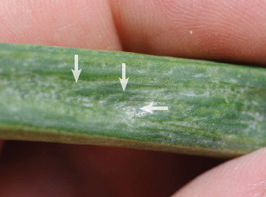
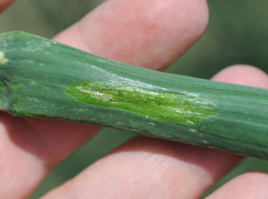
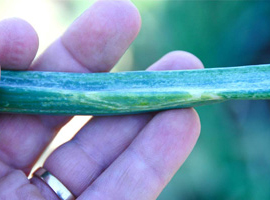
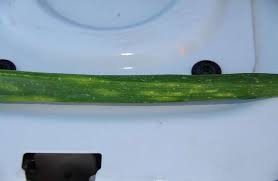
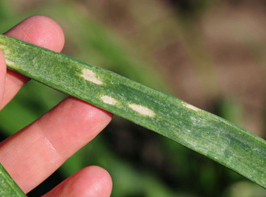
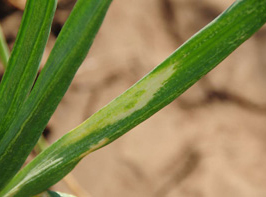
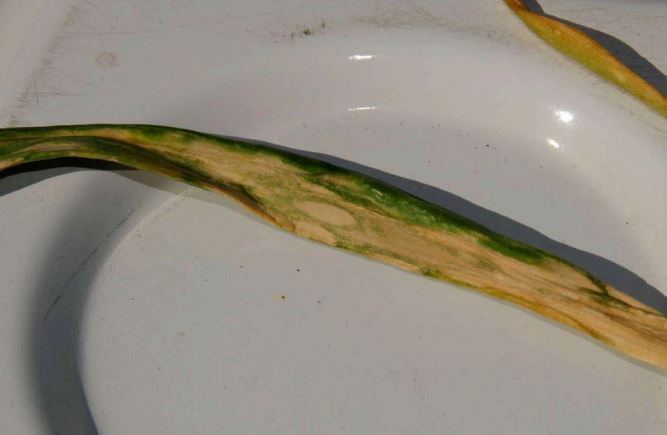
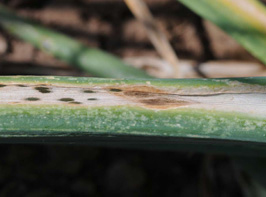

Quick Facts
- Iris Yellow Spot Virus (IYSV) is a damaging viral pathogen of onions. The disease can devastate an onion field by destroying the photosynthetic area of the leaves of infected plants (Fig. 1), thus reducing the ability of the plant to develop bulb size and directly affecting yield and grade of onions at harvest.
- Infected onions can overwinter and harbor the disease from one season to the next and serve as a reservoir of disease the following season.
- Several weed species have been implicated as hosts of the virus, but little is understood regarding their relationship to the development of IYSV outbreaks. In onion fields, IYSV is vectored, or carried, by the onion thrips (Thrips tabaci) from an infected host plant and the virus enters into a non-infected plant when the insect feeds.
- Once a plant is infected there is no control practice to eliminate it from the plant.
- Control of the disease is based on crop rotation, control of volunteer onion plants, weed control, and chemical and cultural control of the thrips that vector, or move, the virus.
IYSV was first isolated and characterized from infected iris (Iris holandica) in the Netherland in 1998 (Cortes et al., 1998); however, a Tospovirus (likely IYSV) was detected in onions in North America in the late 1980s (Hall et al., 1993). The evidence suggests the IYSV disease may have been present and causing some level of damage in onions produced in North America, prior to 2000 (Schwqartz and Gent, 2008). Published confirmation of when IYSV was first recognized in onions grown in Utah was in 2003 (Abad et al., 2003). IYSV belongs to the genus Tospovirus in the Bunyaviridae family of viruses, a large group of viruses that are vectored, or moved, by arthropods when they feed. The virus particles are protein enveloped RNA viruses. IYSV is vectored by the onion thrips (Thrips tabaci). Severity of IYSV is dependent upon effects of host cultivar and timing of infection relative to the age of host plants. Factors such as climate, plant nutrition, and proximity to suspect host weeds may also play a role in IYSV development, but their influences of weed hosts are undetermined to date. Several weed species have tested positive using enzyme-linked immunosorbent assay (ELISA, an antibody test that develops a color reaction to detect the presence of the virus), although fewer have been confirmed using the more sensitive polymerase chain reaction (PCR) tests.
Symptoms
Exactly how long IYSV lesion symptoms take a to develop after a viruliferous (virus carrying) thrips feed upon, and thus inoculate what was a healthy plant, is not clear in onions. An observer will find a range of lesion types in an infected field of onions. These different lesion symptoms are likely influenced by host cultivar, timing of infection amount of virus inoculated when feeding occured, how many viruliferous thrips were feeding and for how long they fed, the nutrition of the host plant, and climatic factors. Early lesion symptoms often appear as a series of concentric rings of lighter and darker rings, often longer than they are wide, around a thrips feeding point (Fig. 2). We have also observed light green diamond-shaped lesions (Fig. 3). Concentric rings of green and straw colored necrosis occur also (Fig. 4), but the frequency of this lesion type is less common.
Often a severely infected leaf will show multiple feeding points where several infection are becoming evident simultaneously and appear as light green diamond shaped areas (Fig. 5). Our experience has been that the more common tan necrotic lesion is observed at a much higher frequency than the other other unusual lesion types (Fig. 6). Often green islands can be observed within a necrotic lesion (Fig. 7). The significance of these different lesion types is unknown; however, the lesion can grow and coalesce (Fig. 8). Eventually the lesions can girdle a leaf and kill it. Infected leaves then collapse. The net effect of the damage caused by IYSV is that it reduces green leaf area of the plant and causes a reduction the ability of the plant to fill the onion bulb. This reduces the harvest yield and grade of onions, thus reducing profits a grower may obtain in years with sever IYSV. There are some disease that can appear to be IYSV but are not (Fig. 9, Cladosporium leaf spot). Severely infected fields will senesce prematurely (Fig. 10), often turning the leaves brown as infected plants collapse and die prior to harvest.
Diagnosis
The images in this fact sheet will provide a grower with the ability to identify IYSV in their onions most situations. If a person is still doubt, we suggest contacting your local county Extension agent for additional help. If diagnostic confirmation is necessary, a sample leaf with associated suspect IYSV symptoms, can be taken or sent to the Utah Plant Pest Diagnostic Laboratory in Logan, UT.
Disease Cycle
IYSV likely overwinters in volunteer onions from one season to the next. The virus is also known to naturally infect a wide range of host plants (see Table1). No know transfer of IYSV from a weed host to onions (Allium spp.) has been documented to date, however it is suspected to occur. IYSV is not known to be seedborne. Emerging Thrips tabaci (onion thrips) move the virus from infected onion plants to non-infected plants when they feed.
Management
Management of IYSV in onions is best accomplished using an integrated pest management (IPM) strategy. Volunteer onions should be removed or killed along with weeds using an appropriate herbicide and/or use of appropriate and timely tillage. Weeds should be managed along the border areas of production fields and within fields as well. Crop rotation should be practiced to minimize the build-up of thrips populations. Care should be taken to plant quality transplants in a field. Evaluation of onion cultivars has not shown specific cultivars to be resistant, but green-leaf cultivars had less incidence and severity of IYSV than blue-leafed cultivars under moderate to sever disease. Uniform and densely planted field reduce the incidence of IYSV. Onions for seed and bulb production fields should be spearated.It is reported that overhead irrigation suppresses thrips populations, but will likely lead to salt build-up given water quality and alkalinity of soils in Utah. stressed plants are often predisposed to other diseases and so water and nutrient stresses should be avoided. Straw mulch has been used in Utah to improve water infiltration within bedded onions and may also serve to inhibit thrips, the reasons for this are not well understood, the reflective color of the straw is thought to discourage thrips from moving into the straw-mulched onions. Management of thrips early in the onion season is reported to help keep IYSV incidence at lower levels.
Table 1. Host plant species reported to be naturally infected with IYSV. A list of some experimental host plant species is included.
| Host Plant's Latin Name | Common Name |
|---|---|
| Allium altaicum | wild/ornamental onion |
| Allium cepa | onion (garden/commercial) |
| Allimu cepa var. ascalonicum | onion (garden/commercial) |
| Allium fistulosum | bunching onion |
| Allium sativum | garlic |
| Allium pskemense | wild/ornamental onion |
| Allium schoenoprasum | chives |
| Allium vavilovii | wild/ornamental onion |
| Alstroemeria sp. | Peruvian lily |
| Amaranthus retroflexus | red root pigweed |
| Atriplex micrantha | twoscale saltbush |
| Bessera elegans | coral drops (ornamental) |
| Chenopodium album | lambsquarter |
| Clivia minata | kaffir-lily |
| Cycas sp. | ornamental palm (cycad) |
| Eustoma grandiflorum | Texas bluebell |
| Eustoma russellianum | lisianthus |
| Geranium carolinianum | Carolina geranium |
| Hippeastrum hybridum | ornamental bulbous flower |
| Iris holandica | iris |
| Kochia scoparia | kochia |
| Lactuca serriola | prickly lettuce |
| Linaria canadensis | blue toadflax |
| Pelargonium hortorum | common geranium |
| Petunia hybrida | petunia |
| Portulaca oleracea | purslane |
| Rosa sp. | roses |
| Setaria viridis | green foxtail2 |
| Sonchus asper | spiny sowthistle |
| Tribulus terrestris | puncturevine |
| Vicia sativa | vetch (garden vetch) |
| Vigna unguiculata | black-eyed pea |
| Experiment Hosts | Mechanically Inoculated |
|---|---|
| Chenopodium amaranticolor1 | another type of lambsquarter |
| Chenopodium quinoa1 | quinoa |
| Gomphrena globosa1 | globe amaranth |
| Datura stromonium1 | jimson weed |
| Nicotiana benthamiana1 | ornamental tobacco |
1Experimental host plant species that IYSV is reported as mechanically inoculated in experimental host range trials. Table 1 is a summary of host plant species condensed from Cortes et al., 1998, Evans et al., 2009, Evans et al., 2009 In Press, Gent et al., 2006, Pappu et al., 2006, and Sampangi et al., 2007. This list will likely grow to include other species as research progresses.
2To our knowledge, this is the first grass reported as a host species of a Tospovirus.
Related Research


